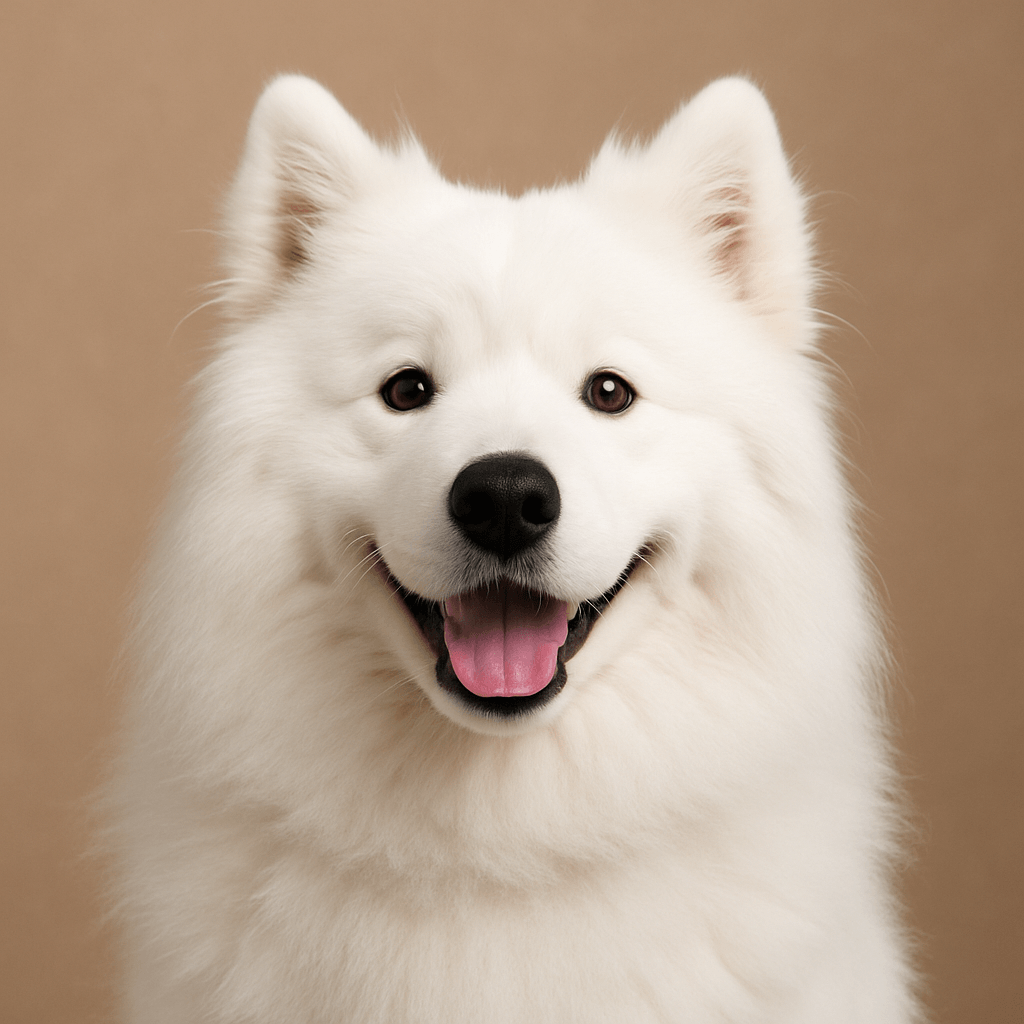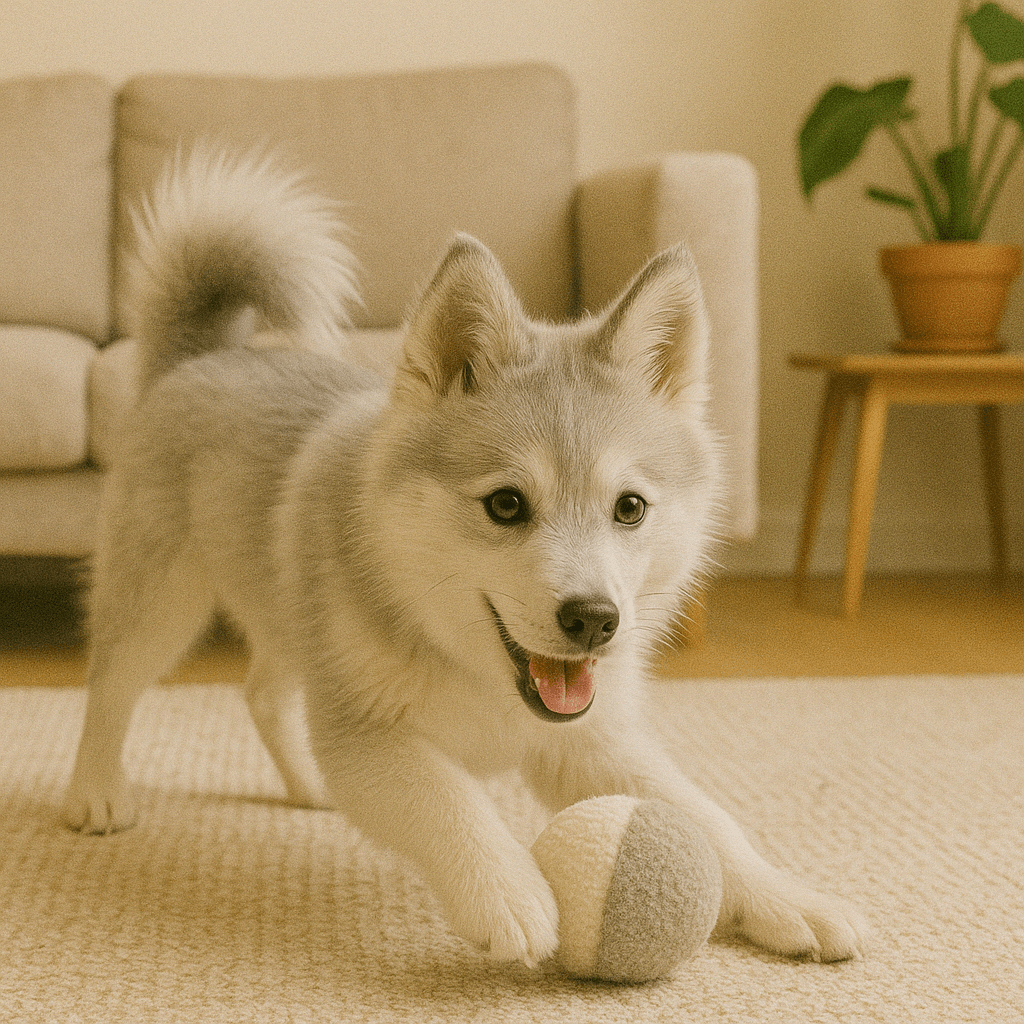
🐾 Australian Shepherd (Aussie) – Personality, Care and Owner's Guide
🔍 Origin and history of the breed
Although its name suggests Australian origins, the Australian Shepherd—or Aussie—is a breed that developed entirely in the United States. The breed's history dates back to the 19th century, when European settlers, primarily from the Basque region (Spain and France), arrived in America with sheepdogs to help them herd sheep.
Among these sheep were also imports from Australia, which likely influenced the breed's later name. Known for their hard work and herding instincts, these dogs were crossed with other working herding breeds in the United States, resulting in the creation of an exceptionally versatile and intelligent dog – the Australian Shepherd.
The Aussie quickly gained popularity on American ranches and farms. It was not only a helpful companion for cattle and sheep, but also a vigilant farm guard and devoted companion. In the 20th century, its abilities were noticed by horse show trainers – the dogs began performing in rodeos and quickly gained the public's affection.
The breed was officially recognized by the American Kennel Club only in 1993, even though the Aussie was already well-known among breeders and working dog enthusiasts. Today, it is not only a working dog but also a family, sporting, and therapeutic dog, enjoying enduring popularity worldwide.
The Aussie quickly gained recognition as an exceptionally agile, energetic, and versatile herding dog, perfect for ranches and farms. Today, it is also a popular sporting dog and family companion, known for its immense intelligence and loyalty.
🤔 Character and temperament of the Australian Shepherd
The Australian Shepherd is a dog that combines exceptional intelligence with immense energy and loyalty. He's quick-witted, quick-witted, and incredibly alert – always ready to cooperate and enthusiastic about new challenges. This breed abhors stagnation – he needs daily stimulation, both physical and intellectual.
The Aussie is a "special purpose" dog – ideal as a guide dog, therapy dog, rescue dog, agility competitor, or trail companion. Its intelligence sometimes resembles human thinking – it can solve problems, memorize commands at lightning speed, and analyze situations independently.
At the same time, the Aussie is a very sensitive dog with a strong emotional bond with its owner. It's not an independent wanderer—it needs human presence, attention, interaction, and shared activities. It thrives in homes with an active lifestyle, where everyone is involved in raising and playing with the dog.
The Aussie can initially be reserved around strangers, stemming from its guarding instincts. However, it doesn't display aggression without reason – it's a balanced dog that can assess the situation and react appropriately. It can be protective of children, but its strong herding instincts can manifest in attempts to herd them – which is why early training and socialization are so important.
This is a dog for people who want to "work with their dog"—not just for walks, but also for learning, playing, developing, and building relationships. An Australian Shepherd who doesn't have a job can become frustrated and develop problem behaviors, such as destroying things, barking, or even depression.
In short, the Aussie is a challenge and a reward in one. For an active owner, they will be an invaluable companion – loyal, affectionate, always ready for action, and willing to give their heart for their human.
This dog needs not only physical exercise but also intellectual stimulation. Boredom is their biggest enemy – a bored Aussie can become destructive, bark, or exhibit compulsive behavior. They love tasks, training, dog sports (agility, frisbee, obedience), and any activity with their owner.
📊 Size and appearance
The Australian Shepherd is a medium-sized dog with a well-proportioned, muscular build, built for work and physical endurance. Its body is compact, well-muscled, but not heavy, retaining the lightness and agility necessary for moving over difficult terrain. The Aussie is distinguished by its elegant build, harmoniously combining strength and grace.
-
Height at the withers : dogs 51–58 cm, bitches 46–53 cm
-
Weight : 18–32 kg – depending on gender, build and activity level
-
Length of the torso : slightly longer than the height - rectangular silhouette, but with a well-defined lumbar line
Characteristic features of appearance:
-
Head : In proportion to the body, with a slightly rounded forehead and a well-defined frontal-nasal transition (stop).
-
Eyes : almond-shaped, medium-sized – heterochromia (different colored irises or irises with spots) is common.
-
Ears : medium, triangular, slightly rounded at the tips, carried half-hanging – giving the dog an alert and friendly expression.
-
Coat : Medium length, slightly wavy or straight, with a dense undercoat for weather protection. Males often have a prominent ruff around the neck and chest.
-
Color : Widely varied – blue merle, red merle, black, chocolate; with or without tan markings, with or without white markings. No one combination dominates – each Aussie looks unique.
-
Tail : naturally short (bobtail) or long – in some countries tail docking is still permitted, but this is increasingly being abandoned.
Movement : The Aussie moves freely and gracefully, with pronounced drive from the hind legs and a long reach from the forelegs. Its movements are fluid, dynamic and very economical – ideal for working long hours.
-
Height at the withers : dogs 51–58 cm, bitches 46–53 cm
-
Weight : 18–32 kg
-
Coat : Medium length, slightly wavy or straight, with an undercoat
-
Color : blue merle, red merle, black, chocolate, with possible white and tan markings
-
Eyes : often heterochromia (each eye a different color)
-
Ears : triangular, rounded at the tips, drooping
-
Tail : Naturally short (bobtail) or docked (where permitted)

🤟 Health and the most common problems
The Australian Shepherd is a generally healthy breed, but like any breed, it has its genetic predispositions and potential health problems that are worth knowing about to ensure your dog has a long and comfortable life.
Common Ailments in Aussies:
-
MDR1 (Mutant Drug Resistance 1) – a gene mutation responsible for hypersensitivity to certain drugs, such as ivermectin. It can lead to severe poisoning.
-
CEA (Collie Eye Anomaly) – a hereditary eye disease that can lead to vision loss.
-
PRA (Progressive Retinal Atrophy) – leads to blindness, usually manifests in adulthood.
-
Cataracts – common, may develop with age and affect the quality of vision.
-
Hip dysplasia (HD) – typical of medium and large breed dogs, can cause pain and limited mobility.
-
Idiopathic epilepsy – recurrent epileptic seizures of unknown cause.
-
Autoimmune thyroiditis (hypothyroidism) – symptoms include lethargy, skin problems, and weight gain.
Preventive recommendations:
-
Genetic testing (MDR1, HSF4, CEA, PRA)
-
Regular eye examinations (by a veterinary specialist)
-
X-ray of hips and elbows (especially before planned sports or reproduction)
-
Preventive blood and urine tests at least once a year
-
Maintaining a healthy body weight and physical activity
-
Avoiding the use of non-recommended medications without prior MDR1 testing
Tip: When buying a puppy, always ask the breeder to see the parents' MDR1, HSF4, dysplasia, and eye disease test results. This isn't just a formality, but a real safeguard for your future pet's health.
-
MDR1 – hypersensitivity to certain drugs
-
Heterochromia and eye diseases : PRA, cataracts, CEA
-
Hip dysplasia (HD)
-
Idiopathic epilepsy
Preventive recommendations:
-
Genetic testing for MDR1, HSF4, CEA
-
Regular eye checkups by a veterinary ophthalmologist
-
X-ray of the joints
-
Healthy diet and physical activity
🛏 Aussie at home and in the family
The Australian Shepherd is a dog that thrives in active families. He's affectionate, loyal, and deeply attached to his owner. He wants to be a part of everyday life—accompanying family members on walks, trips, and even daily chores. In return, he expects attention, activity, and time spent together.
The Aussie gets along well with children, especially if properly socialized from a young age. Due to its herding heritage, it may have a natural tendency to "herd"—for example, gently nipping at the legs. This isn't a sign of aggression, but rather an instinct that can be calmed through consistent training and play.
In relationships with other dogs, the Aussie is usually friendly, although it can be dominant in a group. With proper socialization and introduction of rules of coexistence, it functions perfectly in homes with other animals – both dogs and cats.
It's important to provide them with opportunities to burn off energy—both physically and mentally. This dog doesn't handle loneliness and boredom well. If left alone for long hours, they may become destructive, bark excessively, or become frustrated.
Although the Aussie can live in an apartment, he feels most comfortable in a house with a garden or in an environment where he has space to run. The key to his happiness, however, isn't size, but daily exercise, contact with people, and a sense of belonging in the pack.
For people looking for a family dog that is active, emotionally engaged and ready for any adventure, the Australian Shepherd will be the perfect choice.
He needs plenty of exercise, but also time spent with his family. He's not a dog to be left alone for long hours.
He can live in an apartment as long as you provide him with daily exercise, play and training.
💼 Coat care
The Australian Shepherd's coat requires regular grooming, but with proper care, it's easy to maintain. The Aussie has a double coat—a longer, protective topcoat and a dense, soft undercoat. This structure provides protection from cold, moisture, and sun exposure, but it also causes heavy shedding, especially in spring and autumn.
-
Brushing : 2–3 times a week for most of the year, daily during shedding season. Use slicker brushes, detangling combs, and deshedding tools (e.g., Furminator).
-
Matting : Pay particular attention to areas where mats are most likely to form – behind the ears, under the arms, in the groin, and at the base of the tail. Regular brushing of these areas will prevent matting.
-
Baths : Every 2–3 months or as needed (e.g., after a muddy walk). Use a mild shampoo designed for dogs with undercoats. Avoid overbathing, as this can dry out the skin.
-
Drying : After bathing, it's a good idea to dry your dog thoroughly, preferably with a hairdryer on a cool or lukewarm setting. Failure to completely dry the coat can encourage the growth of bacteria and fungi.
-
Nails : Trim nails every 3–4 weeks if they don't wear down naturally. Long nails can cause discomfort and posture problems.
-
Ears and eyes : Check ears regularly (once a week) for excess earwax or unpleasant odors. Eyes can be washed with saline or a special eye wash for dogs.
Grooming Tip: Make grooming enjoyable for your dog – reward him with treats, speak in a calm voice, and avoid rushing. A regular routine will make brushing and bathing a natural part of the day.
🎯 Toys and activities
The Australian Shepherd loves exercise, tasks and human contact:
-
Logical and olfactory toys
-
Frisbee, balls, tug-of-war
-
Agility, obedience, dog dancing
-
Field work: e.g. tracking, nosework
✨ Interesting facts about the Australian Shepherd breed
-
Aussies are known for their extraordinary expressiveness – they can communicate emotions through their eyes and body language better than many other breeds.
-
Many dogs of this breed are born with a naturally short tail (so-called bobtail), which is sometimes confused with docking.
-
Dogs of this breed make excellent film actors – their intelligence and obedience make them ideal partners on set.
-
The Australian Shepherd can remember dozens of commands and gestures – in tests of functional intelligence it is second only to the Border Collie.
-
This is one of the most frequently chosen breeds by agility and obedience competitors around the world.
-
Their eyes can be different colors – one blue, the other hazel, or even have spotted irises, which gives them a unique look.
❓ Frequently asked questions (FAQ)
Is an Australian Shepherd suitable for apartment living?
Yes, but only if you provide him with daily exercise and mental stimulation. Aussies need activity and human contact.
Is an Aussie a good dog for beginners?
It depends. If a novice owner is committed, active, and willing to learn, they can do very well. However, the breed requires consistency and time.
Does the Aussie shed a lot?
Yes – especially during shedding season. Regular brushing is key to keeping the coat in good condition.
Is this a dog for a family with children?
Yes, as long as children understand the rules of dog behavior. Aussies can be protective, but their herding instincts can lead them to try to "herd" them.
Does an Aussie need training?
Absolutely. He's a very intelligent dog who loves to learn. Training strengthens the bond and helps him realize his potential.
How long does an Australian Shepherd live?
The average lifespan is 12–15 years. With good care and an active lifestyle, they can live even longer.
📅 Summary
The Australian Shepherd is a dog brimming with energy, passion, and devotion, captivating not only with its beauty but above all with its character. For active, committed owners, it will be a wonderful companion for everyday adventures—at home, in the field, at sporting events, and in therapeutic work. Its intelligence, charm, and adaptability make it an exceptionally versatile—but also demanding—dog.
This isn't a breed for everyone. The Aussie needs more than just walks—it needs a human to be its guide, partner, and mentor. It requires daily stimulation, clear rules, and, above all, presence and connection.
A well-bred Australian Shepherd rewards you with incredible loyalty, a willingness to learn, and a huge heart. This is a dog that will not only fill your day but also transform your lifestyle—making it more aware, active, and full of emotion.
If you're looking for a dog that will accompany you everywhere—from mountain trails to evenings on the couch—the Aussie might be your ideal companion. But remember: they're a partner through thick and thin. 🐾❤️




 https://petto.com.pl
https://petto.com.pl